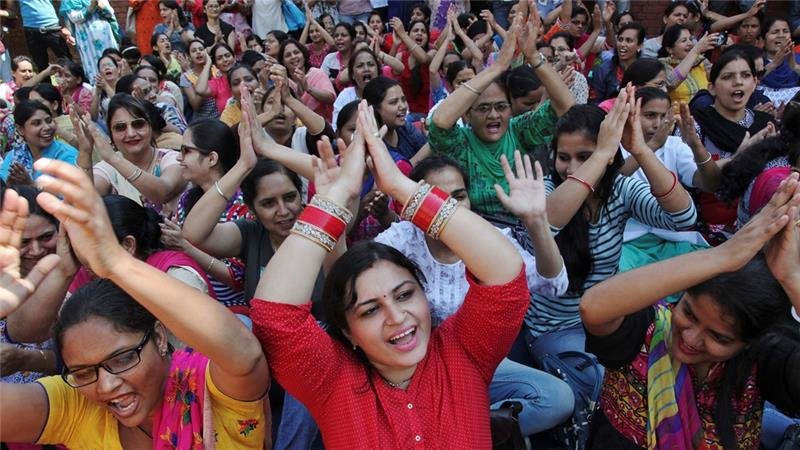Comment: Union officials said about 180 million workers, including state bank employees, school teachers, postal workers, miners and construction workers, were participating, but the figure could not be independently verified.
But if you're an American relying on cable news, it would be hard to know it ever happened.
Not a single American cable news network ran a segment focused on India's massive strike, even on Labor Day, the U.S.'s annual holiday dedicated to workers.
The strike came after Modi began a push for increased foreign investment and privatization of some state-run industries. Unions fear these policies will undermine both wages and employment.
The size of the strike alone forced the government to offer concessions prior to Friday in an attempt to avert it, offering a boost in the minimum wage for some non-skilled workers and the unfreezing of some public employee bonuses.
The unions were not persuaded by this offer. "Prime Minister Narendra Modi said his fight is with poverty, but it seems his fight is with the poor in this country," Indian National Trade Union Congress Vice President Ashok Singh said prior to the strike.
The unions petitioned the government with a list of demands, including a call to increase the minimum wage to 18,000 rupees a month (around $271 USD). India-based The Hindu published a short video report on the strike with English subtitles.
The only mention of the strike on U.S.-based cable news was during a segment on CNN International where the CEO of the human resources consulting firm ManpowerGroup cited the Indian strike as part of global concerns about technology suppressing wages.




Comment: Modi has ambitious plans for the densely populated country: Narendra Modi's new world: First 100 days,10 top moves
And is seen to be popular: India under Modi: Pew survey shows national pride has never been this high since 1970